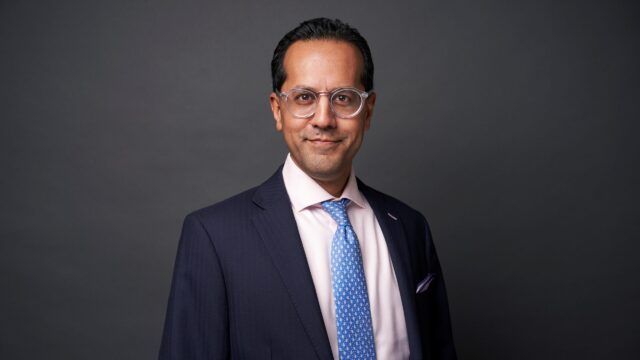Investors using a 60/40 portfolio can expect returns in the high single digits this year, a big improvement on last year, according to Prashant Bhayani, chief investment officer for Asia at BNP Paribas Wealth Management.
“We’re expecting moderate returns by the end of the year in equities, meaning 6%-12%,” said Bhayani. “If you can get a coupon of 4%-6% in bonds, you can get high single digit returns, but it will still be volatile. The tactical side will also play a role in building out the asset allocation.”
This is likely to be music to ears of most investors as last year both bonds and equities were whacked by inflation and rising interest rates, leading to one of the worst years on record for a 60/40 portfolio.
A 60/40 mix comprising the S&P 500 index with the Bloomberg US Aggregate Bond Index, for example, lost 16% last year.
There have only been five years in recorded history when the annual performance for this traditional portfolio was worse and most of these occurred more than 80 years ago during the Great Depression, according to research from UBS.
As headline inflation looks to have peaked and most investors are factoring in only one more interest rate hike between 25bp and 50bp from the US Federal Reserve this year, Bhayani is constructive regarding investment grade bonds and some non-US equities.
“The key thing is bonds are back. Income is back. We think we’re moving from a TINA (there is no alternative to equities) to a TARA (there are reasonable alternatives),” said Bhayani.
His views echoed those of a number of asset managers, who have long been pleading for investors to re-engage with investment grade debt.
Those views are buttressed by the fact that yields are now significantly higher across investment grade and high-yield markets with many sectors at multi-year highs.
In addition, today’s issuers are in better shape financially than issuers during previous recessions, in part because the corporate market went through a default cycle only two years ago when Covid-19 hit and the surviving companies used the opportunity to refinance, extending their maturities.
“We do like investment grade bonds, dollar bonds,” said Bhayani. “As long as it’s good quality credit because you can lock in four, six, seven percent yields, especially if you’re senior, but even subordinated, and hold to maturity.”
BNP Paribas Wealth Management is also now overweight China equities, favouring those sectors that benefit from domestic consumption recovery such as travel and tourism as well as healthcare and EV supply chain names.
“This year we think you can start buying the dips in equities. We’re not calling the bottom yet, but you can start buying the dips in some of these oversold markets,” said Bhayani.
Those oversold markets also include Europe, Bhayani said, although he said that BNP Paribas Wealth Management would examine investment opportunities on a sector-by-sector basis.
“You’re not buying Europe, you’re buying luxury goods, you’re buying building materials that benefit from fiscal stimulus. That’s how we look at Europe,” he said.
Regarding India, where a lot of the flows in the region have migrated to since the pandemic hit in China, he was more circumspect, pointing to the stretched valuations.
“We like India fundamentally for a number of reasons. We were overweight. It’s just valuations took us to downgrade early last year,” he said. “Demographic story, outsourcing story, reform story, the Modi government. It’s just that near-term valuations are the problem. And obviously north Asia now from a valuations point of view is timelier.”
Bhayani also said that investors should look to cash and alternatives as buffers against volatility. He singled out hedge funds, particularly macro funds, for their strong performance last year.
Several macro firms, most notably Bridgewater Associates, posted double-digit returns last year even as stocks and bonds fell in tandem, benefiting from the surge in volatility, particularly across rates and foreign exchange.
Bhayani said that while some of the conditions that prompted such a strong performance were unlikely to be repeated this year, he still expected macro funds to outperform this year.
“The dollar move was a 20-year move in nine months. So that kind of move they love. That’s a trend that many of those funds depending on the strategy benefited from,” he said. “From that perspective, probably the opportunities aren’t as foretelling as last year. But longer term, it’s about micro, more the bottom-up micro trades, the US versus Japan or Europe. That’s still there because of interest rate differentials.”
Alternatives, whether that was hedge funds, private equity or real estate, generally proved popular with investors last year, in part due to the fact that you do not have to mark-to-market so they were shielded from some of the public market losses. Bhayani expects some losses this year in private markets but generally is positive about the asset class.
“If there’s a moderate recession, there’ll be some marks for the traditional private equity and real estate firms but it won’t be something we haven’t seen in other cycles except on the tech VC side, that’s our base case. But we would continue the allocation. Because these guys, the investment period is minimum three to seven years and then 10 to 12 years to harvest. So in most cases they don’t allocate all in one year before the pandemic or one year after and that will continue,” he said.

















